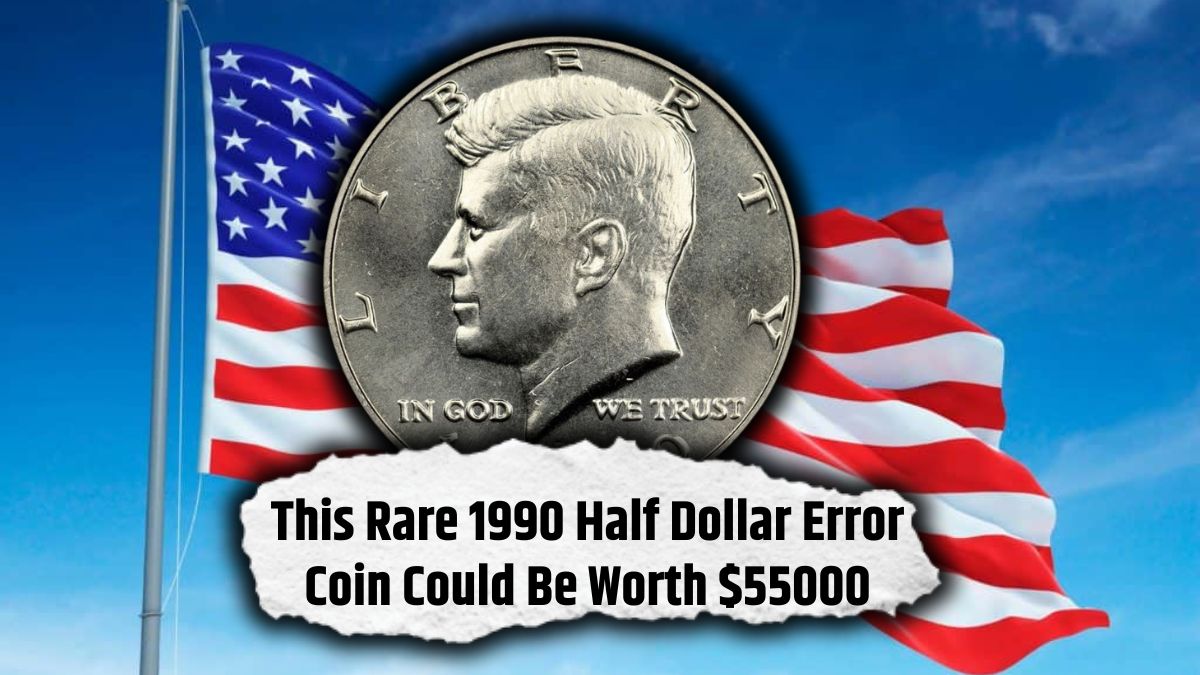Most people wouldn’t believe that a 1990 Kennedy Half Dollar could fetch tens of thousands of dollars, yet that’s exactly what’s happening in the coin collecting world. Thanks to rare minting errors and missing elements, a few select half dollars from this year are now valued at up to $55,000. What was once just spare change has become a sought-after collector’s prize.
A Coin From a Transitional Era in U.S. Minting
The 1990s marked a turning point in American coin production, with improvements in minting technology and growing interest in collector-grade coins. The Kennedy Half Dollar, though minted in large quantities, was increasingly limited to proof sets and special editions. Produced at the Philadelphia, Denver, and San Francisco mints, most coins from this year are common—except for a few that contain exceptional errors now drawing massive attention.
The Error That Created a Numismatic Sensation
Despite advancements in minting, errors still happen, and one of them in 1990 turned out to be historic. A batch of proof Kennedy Half Dollars was mistakenly struck without the “S” mint mark—the symbol indicating San Francisco Mint production. These “no S” coins slipped past quality control and ended up in collector sets. For numismatists, these minting mistakes are thrilling; they transform an ordinary coin into a rare and highly valuable artifact.
The Shocking $55,000 Sale That Shook the Market
A 1990 Half Dollar missing its mint mark recently stunned the collector community by selling for a jaw-dropping $55,000 at auction. Its value wasn’t just in the missing mark—it was also in its flawless proof condition, with mirror-like surfaces and no visible wear. Experts estimate that only a handful of these error coins exist, making them extremely rare and desirable. Their scarcity and top-tier preservation have elevated their status—and price—among elite collectors.
Tiny Details That Define Big Value
What separates a standard $0.50 coin from a $50,000 rarity? The answer lies in minute details. Collectors look for sharp lines, original mint luster, and the absence of handling wear. A coin missing the mint mark but maintaining a pristine, untouched surface can command a much higher value. On the flip side, even minor scratches or blemishes can drastically reduce worth. This is why professional coin grading is critical—it verifies and protects a coin’s market value.
Hidden Treasures in Old Proof Sets
Interestingly, some of these valuable 1990 Half Dollars have been discovered in forgotten proof sets, buried in closets, attics, or old family collections. Many households hold these sets without realizing their hidden value. Estate sales, dusty coin albums, and inherited hobby collections are common places where this rare coin has resurfaced. It serves as a strong reminder that incredible finds might be hiding in plain sight.
Authentication Is a Must for Serious Value
Before you consider selling or showcasing a potentially valuable coin, it’s essential to have it authenticated and graded. Reputable services like PCGS (Professional Coin Grading Service) or NGC (Numismatic Guaranty Company) assess the coin’s legitimacy, certify the error, and assign a grade. This authentication dramatically increases its credibility and market price. Without certification, it’s nearly impossible to demand the high figures seen in auctions.
Hope for Today’s Coin Collectors
The story of the 1990 Half Dollar gives modern-day collectors new hope. You don’t need a centuries-old coin to find something valuable—modern mint errors can also become valuable collectibles if they’re rare and in excellent condition. That’s why it’s smart to carefully inspect all coins in your possession. A close look could turn your pocket change into a numismatic windfall.
Disclaimer
This article is intended solely for informational purposes. The market value of collectible coins can vary significantly based on condition, rarity, demand, and authenticity. Not every coin resembling a rare type is guaranteed to be valuable. Always consult with certified grading agencies and numismatic experts before making assumptions about any coin’s worth. Auction prices referenced here are historical and may not reflect current or future valuations.
